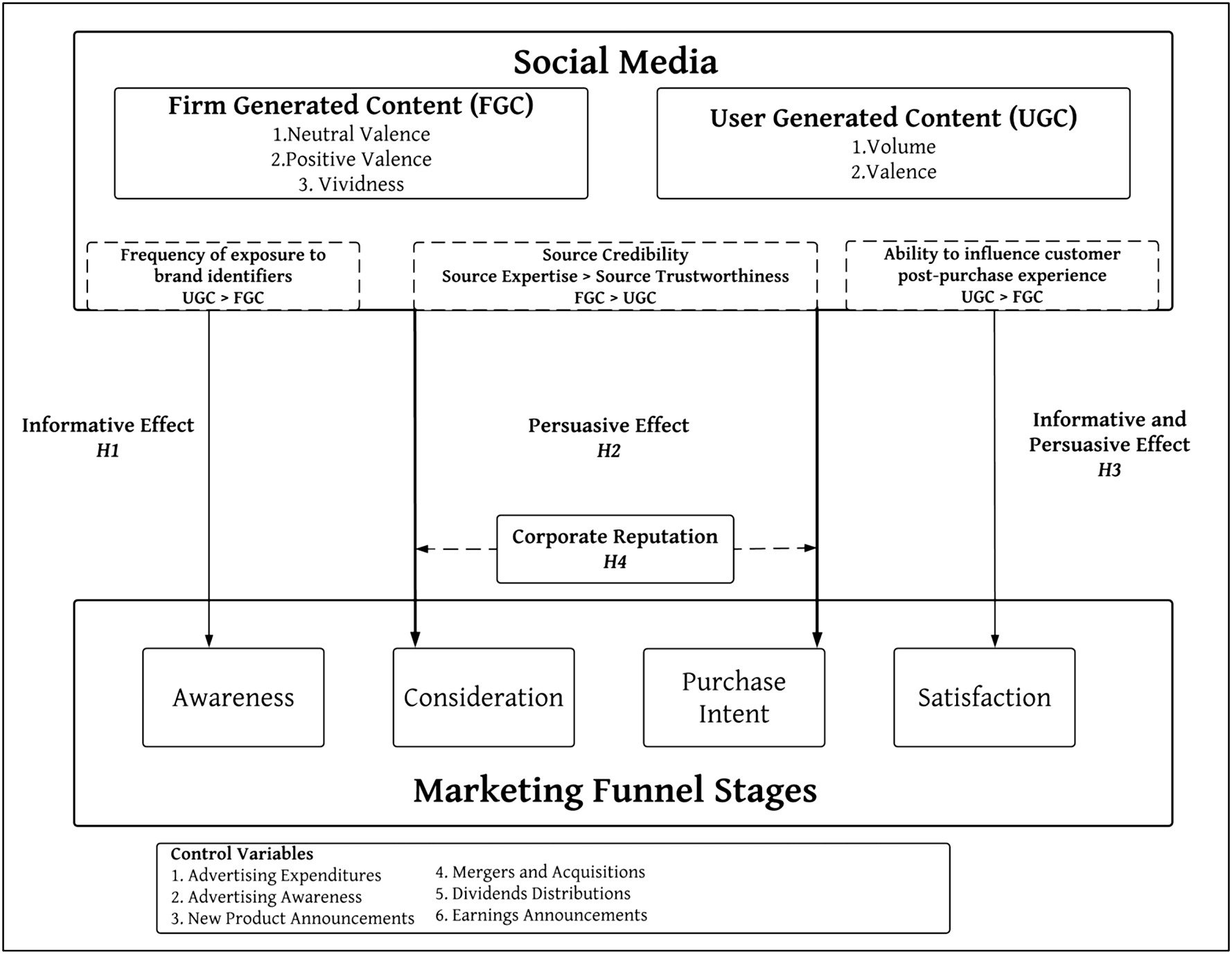9.3 Who-Generated Content
Observational and experimental work on Negative WOM (Sen and Lerman 2007)
Differences between Firm and User-generated content can be found in Colicev, Kumar, and O’Connor (2019)
Colicev, Kumar, and O’Connor (2019) propose a framework of how FGC and UGC (based on information processing and source credibility) match on marketing funnel stages and related studies. UGC has a strong correlation with awareness and satisfaction while FGC (specifically vividness) are more effective for consideration and purchase intent. While UGC valence dominates UGC volume for these stages. Brands with higher corporate reputation have stronger relationships between dimensions of FGC and the marketing funnel stages.
Brand Buzz in the Echoverse
Echoverse: “the entire communication environment in which a brand/firm operates, with actors contributing and being influenced by each other’s actions.” (p. 1)
Actors
Firms: advertising, press releases
Consumers: online WOM, attitudes, and behaviors
Sources of actions: firms, news media, online WOM, consumer sentiment, and business outcomes
Data: longitudinal US financial services
Use: Vector Autoregressive Model with Granger causality
Can view table 1 for review on echoverse components
Symmetric echo between traditional media and online WOM.
Firm communications influence the traditional media, consumer sentiment, business outcomes (e.g., deposits)
Negative news spiral: Bad news can spread fast
- Solution: Twitter and press releases can save the day
Advertising do not directly affect traditional media, online WOM, or consumer sentiment, but directly affect firm outcome.
Firms care more about online WOM as compared to consumer sentiment (measured by survey)
Online WOM can affect consumer sentiment, but not the other way around.
Online WOM affects business outcome., but not the other way around.
Twitter gone from positive spiral to negative spiral overtime.
Even though firms counteract negative WOM with positive tweets, the volume of their tweets stay limited.
At first, Twitter has no impact on business outcome, but later they do have more significant impact on firm performance (p. 15)
Wells Fargo extremely positive tone backfire in negative firestorm, while consistent (i.e., large volume) of moderate tweets are better.
